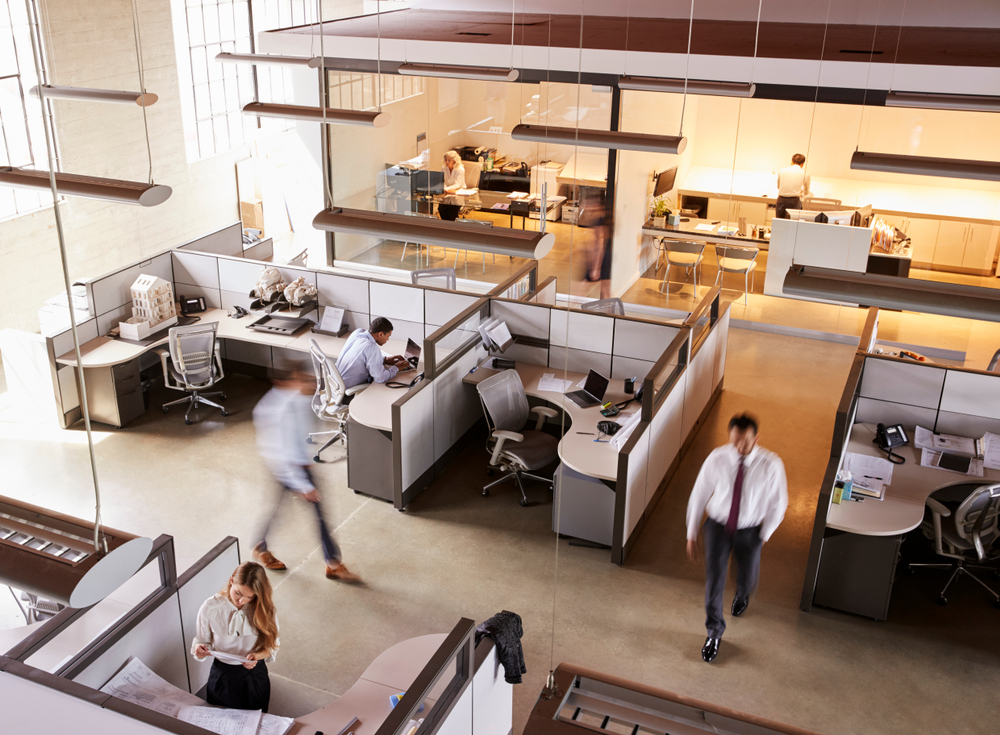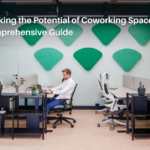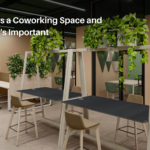
Open Space vs. Private Office: Which Workspace is Right for You?
Choosing the right office layout is a critical decision that can significantly impact productivity, employee satisfaction, and overall business efficiency. In today’s dynamic work environment, the debate between open space offices and private offices remains a hot topic. Both layouts have their unique advantages and challenges, and the right choice depends on various factors such as the nature of the work, company culture, employee preferences, and budget constraints. Understanding these aspects is essential for business owners, freelancers, and digital nomads looking to create a workspace that maximizes efficiency and satisfaction. This article will delve into the specifics of open space and private offices, comparing their benefits and drawbacks to provide a comprehensive guide for making an informed decision.
In this story
The modern workspace has evolved significantly over the past few decades. From the traditional cubicle farms of the 80s and 90s to the trendy open-plan offices of the 2000s, the way we design our work environments has changed to meet new demands. With remote work and flexible schedules becoming more prevalent, businesses are continually adapting their office layouts to stay competitive and foster a productive workforce. However, the question remains: is an open space office or a private office more conducive to achieving these goals?
In this article, we’ll explore the characteristics, benefits, and drawbacks of both open space and private offices. We’ll look at factors to consider when choosing between the two and introduce the concept of hybrid workspaces as a potential solution. By the end, you’ll have a clearer understanding of which office layout might be best suited to your business needs. Whether you’re setting up a new office or reevaluating your current workspace, this guide aims to help you create an environment where you and your team can thrive.
What is an Open Space Office?

An open space office is characterized by a lack of physical barriers between employees. Desks are usually arranged in clusters or rows, with shared areas for collaboration and informal meetings. This layout is designed to foster a sense of community and facilitate easy communication among team members. Unlike traditional office setups with individual rooms or cubicles, open space offices emphasize a more fluid and dynamic environment.
The concept of open space offices dates back to the early 20th century but gained significant popularity in the late 20th and early 21st centuries. Tech giants and creative industries were among the first to adopt this layout, promoting it as a way to enhance creativity, innovation, and team cohesion. The visual openness of the space is meant to symbolize transparency and a flat organizational structure, breaking down the hierarchies that are often reinforced by walls and closed doors.
In an open space office, furniture and design elements play a crucial role. Flexible desks, ergonomic chairs, and movable partitions are common features that allow for easy reconfiguration. The environment is often complemented by communal spaces such as lounges, break areas, and even game rooms, designed to encourage interaction and relaxation. The absence of walls and doors means that natural light can flow more freely throughout the space, creating a brighter and more inviting atmosphere.
However, while the open space office has its appeal, it’s not without its critics. The lack of privacy and potential for noise and distractions can be significant downsides, especially for tasks that require deep concentration.
Benefits of Open Space Offices
Collaboration and Communication
One of the standout benefits of open space offices is the enhanced collaboration and communication they foster. With fewer walls and partitions, employees can easily approach each other, leading to spontaneous conversations and brainstorming sessions. This setup naturally encourages teamwork, making it easier for colleagues to share ideas and solve problems collectively. In industries that thrive on creativity and innovation, such as tech and advertising, this kind of open communication can be invaluable.
The physical proximity of team members in an open space office also facilitates quicker decision-making. When questions arise or immediate input is needed, employees don’t have to schedule formal meetings or walk down long hallways to find their colleagues. Instead, they can simply turn to their neighbor, saving time and maintaining the flow of work. This immediacy can boost productivity and keep projects moving forward at a steady pace.
Moreover, open space offices can help break down hierarchical barriers. In a traditional office setup, executives and managers often have their own enclosed spaces, which can create a sense of division between different levels of the organization. In contrast, an open layout places everyone on a more equal footing, promoting a culture of openness and approachability. This can lead to better relationships between employees and management, fostering a more inclusive and cohesive work environment.
However, it’s important to note that while open space offices excel in promoting interaction, they might not suit every type of work. High levels of noise and activity can sometimes hinder tasks that require intense focus and concentration.
Flexibility and Adaptability
Another significant advantage of open space offices is their flexibility and adaptability. These environments are designed to be dynamic, allowing for easy reconfiguration to meet changing business needs. Whether a company is scaling up, downsizing, or reorganizing teams for new projects, an open layout can be adjusted quickly and efficiently without the need for extensive renovations or disruptions.
In open space offices, furniture is typically modular and movable, which means spaces can be adapted for different purposes with relative ease. For instance, a large open area can be converted into smaller clusters for project teams or cleared out for a large event or meeting. This versatility makes open space offices particularly appealing to startups and growing businesses that need to remain agile and responsive to change.
The adaptability of open space offices also extends to the creation of multifunctional areas. Instead of having designated spaces for specific functions, open offices often feature zones that can serve multiple purposes. A lounge area might double as a casual meeting spot, or a break room might be used for informal brainstorming sessions. This efficient use of space can reduce the overall footprint needed, potentially lowering real estate costs.
Furthermore, the flexible nature of open space offices can contribute to a more engaging and dynamic work environment. Employees can move around and choose different areas to work in, depending on their tasks and mood. This variety can help reduce monotony and improve overall job satisfaction. However, the lack of fixed workspaces can also be a downside for some, who may prefer a consistent, personalized area to call their own.
Cost Efficiency
From a financial perspective, open space offices often present a more cost-effective option compared to traditional private offices. The open layout minimizes the need for constructing numerous walls, doors, and individual HVAC systems, which can significantly reduce initial build-out costs. Additionally, because open spaces can accommodate more employees in a smaller area, companies can save on real estate expenses.
Maintenance and operational costs are also generally lower in open space offices. With fewer physical barriers and enclosed areas, cleaning and upkeep become simpler and less time-consuming. Energy costs can be reduced as well, since open spaces typically allow for better airflow and more efficient use of lighting. Natural light, which can flow more freely in an open office, can further decrease the reliance on artificial lighting, contributing to energy savings.
Moreover, the cost benefits extend to the ease of scaling. As businesses grow, adding more desks or reconfiguring the layout can be done with minimal expense compared to the cost of constructing new private offices. This scalability makes open space offices an attractive option for companies anticipating growth or frequent changes in team size.
Drawbacks of Open Space Offices
Noise and Distractions
One of the most commonly cited drawbacks of open space offices is the prevalence of noise and distractions. With minimal barriers between employees, sound travels easily throughout the office, making it difficult for individuals to concentrate on their tasks. Conversations, phone calls, and even the sound of typing can create a cacophony that disrupts workflow and reduces productivity.
In environments where deep focus and concentration are necessary, these distractions can be particularly detrimental. Employees working on complex tasks or those requiring critical thinking may find it challenging to maintain their train of thought amidst the ambient noise. Over time, this constant level of distraction can lead to increased stress and decreased job satisfaction, potentially affecting overall employee well-being and performance.
Additionally, the visual distractions in an open space office can be just as disruptive as the auditory ones. Movement within the peripheral vision, people walking by, or impromptu meetings can easily divert attention. This can lead to fragmented work patterns and a constant state of partial attention, which hampers productivity and the quality of work produced.
Employers often attempt to mitigate these issues by implementing designated quiet zones or providing noise-canceling headphones. However, these solutions may not fully address the root of the problem and can sometimes introduce new challenges, such as further isolating employees or creating a reliance on personal coping mechanisms. Therefore, the impact of noise and distractions in open space offices remains a significant consideration.
Lack of Privacy
The lack of privacy in open space offices is another major concern. Without enclosed spaces or walls, employees often have little opportunity for private conversations or confidential work. This setup can be problematic for tasks that involve sensitive information, such as HR matters, client negotiations, or strategic planning. Employees may feel exposed and hesitant to discuss important issues openly, which can hinder effective communication and decision-making.
Moreover, the constant visibility of one’s actions can lead to a sense of being constantly monitored, which can be uncomfortable and stressful. Employees may feel self-conscious about their activities, whether they’re taking a personal call, dealing with a private matter, or simply needing a moment to decompress. This lack of privacy can contribute to a feeling of vulnerability and decreased job satisfaction.
The absence of private spaces can also impact social dynamics within the office. Without areas for confidential discussions, employees might struggle to address interpersonal conflicts or provide candid feedback. This can lead to unresolved issues and a less cohesive team environment. In contrast, having access to private spaces can facilitate better communication and stronger working relationships.
To address these privacy concerns, some companies incorporate private phone booths, meeting rooms, or partitioned areas within the open space design. However, these solutions often come with their own set of challenges, such as limited availability or the need for additional resources. Balancing the need for open interaction with the requirement for privacy remains a delicate task.
Health and Well-being
The impact of open space offices on employee health and well-being is another significant drawback. The close proximity of workers in an open environment can facilitate the spread of illnesses, such as the common cold or flu. In the era of COVID-19, this concern has become even more pronounced, as maintaining physical distance and ensuring proper ventilation are critical to preventing virus transmission.
Beyond physical health, the psychological well-being of employees can also be affected by the open office layout. The constant exposure to noise and activity can lead to sensory overload, causing increased stress and fatigue. Over time, this high-stimulation environment can contribute to burnout, particularly for employees who thrive in quieter, more controlled settings.
Moreover, the lack of ergonomic considerations in some open space offices can exacerbate health issues. With the push for flexibility and mobility, employees might not have access to ergonomically designed furniture, leading to discomfort and long-term health problems such as back pain or repetitive strain injuries.
To mitigate these health concerns, companies need to invest in proper ventilation, regular cleaning protocols, and ergonomic office furniture. Additionally, creating spaces where employees can retreat for a break from the hustle and bustle of the open office can help reduce stress and promote well-being. However, these measures require additional investment and planning, highlighting the complexity of managing health and well-being in open space offices.
What is a Private Office?

A private office is a workspace configuration where employees have individual or shared enclosed rooms. Unlike open space offices, private offices are characterized by physical barriers such as walls and doors, which provide a distinct separation from other areas within the office. This layout is traditionally seen in more hierarchical organizations, where private offices are often allocated to senior staff, managers, or individuals whose work requires a high level of concentration and confidentiality.
Private offices offer a controlled environment tailored to the specific needs of the occupant. The enclosed nature of these spaces means that employees can regulate their work environment to a greater extent, adjusting lighting, temperature, and noise levels to suit their preferences. This level of control can lead to increased comfort and productivity, particularly for tasks that require prolonged periods of focus or involve sensitive information.
The origins of private offices date back to the early days of modern office design, where they were seen as a symbol of status and authority. In contemporary settings, however, the use of private offices extends beyond hierarchical symbolism to practical benefits. They provide a quiet, distraction-free environment that can enhance productivity and facilitate confidential discussions, making them ideal for legal work, finance, human resources, and executive functions.
Private offices can also be personalized to reflect the occupant’s style and needs. Employees can decorate their spaces with personal items, choose ergonomic furniture, and organize their workstations in a way that maximizes efficiency and comfort. This personalization can contribute to a sense of ownership and satisfaction, positively impacting morale and engagement.
Despite their benefits, private offices come with certain drawbacks, such as higher costs and potential isolation from the rest of the team. The decision to implement private offices should consider these factors alongside the specific requirements of the business and its employees. Balancing privacy and collaboration is key to creating a productive and harmonious work environment.
Benefits of Private Offices
Privacy and Confidentiality
One of the primary benefits of private offices is the enhanced privacy and confidentiality they provide. In a private office, employees can conduct sensitive conversations and work on confidential tasks without the risk of being overheard or interrupted. This is particularly important for roles that handle proprietary information, legal matters, or personal employee data. The ability to close a door and ensure a private environment is invaluable in maintaining discretion and trust.
The private office setup also allows for better concentration and focus. Without the background noise and visual distractions common in open space offices, employees can immerse themselves in their work. This level of focus is essential for tasks that require deep thinking, such as strategic planning, financial analysis, and detailed writing. The quiet environment of a private office can significantly boost productivity and the quality of work produced.
Furthermore, private offices provide a space for uninterrupted reflection and creativity. Employees can take a step back from the daily hustle and bustle, think strategically, and develop innovative solutions. This solitude can be particularly beneficial for roles that require a high degree of creative output or critical decision-making.
In addition, private offices offer a controlled environment for important meetings. Whether it’s a performance review, a sensitive client discussion, or a brainstorming session, having a dedicated space where conversations can remain confidential and uninterrupted is a significant advantage. This setup fosters open and honest communication, as participants feel more secure sharing their thoughts and ideas in a private setting.
Reduced Distractions
Private offices significantly reduce the distractions that are commonplace in open space environments. With walls and doors creating a barrier from the surrounding activity, employees can work in a quieter, more controlled setting. This isolation from the general office noise and movement allows for higher levels of concentration and focus, which is particularly beneficial for tasks requiring detailed attention and precision.
The reduction of auditory and visual distractions helps in maintaining a consistent workflow. Employees are less likely to be interrupted by spontaneous conversations, phone calls, or the general buzz of an open office. This uninterrupted work time can lead to greater efficiency and the ability to complete complex tasks more swiftly and accurately.
For employees who are easily distracted or who need a quiet environment to thrive, private offices can be a game-changer. They provide a sanctuary where individuals can manage their tasks without the constant pull of external stimuli. This can lead to higher job satisfaction and lower stress levels, as employees feel more in control of their work environment.
Additionally, private offices can mitigate the stress associated with the constant visibility found in open offices. Employees don’t have to worry about being observed or judged by their peers or supervisors, allowing them to work more comfortably and confidently. This privacy fosters a more relaxed and productive atmosphere, where employees can take breaks or handle personal matters without feeling self-conscious.
Personalization and Comfort
The ability to personalize and customize one’s workspace is another significant benefit of private offices. Employees can tailor their offices to their preferences, creating an environment that is both comfortable and conducive to their working style. From choosing the type of furniture to adjusting lighting and temperature, private offices offer a level of control that is simply not possible in open-plan settings.
Personalization extends beyond mere aesthetics. Employees can organize their workspace in a way that maximizes their productivity and comfort. This might include ergonomic chairs and desks, specific technological setups, or even personal touches like photos and artwork. Such customization can make the office feel more like a personal retreat, reducing stress and increasing job satisfaction.
The comfort provided by private offices also has practical health benefits. Ergonomic furniture and the ability to control environmental factors can help prevent common workplace ailments such as back pain, eye strain, and repetitive strain injuries. Employees who are comfortable are less likely to suffer from these issues, leading to better overall health and fewer sick days.
Moreover, a comfortable and personalized office can enhance motivation and morale. Employees who feel at ease in their work environment are more likely to be engaged and productive. They take pride in their workspace, which can translate into greater dedication to their tasks and responsibilities.
Drawbacks of Private Offices
Isolation
While private offices provide numerous benefits, they also come with the drawback of potential isolation. The physical separation from colleagues can lead to feelings of loneliness and detachment, particularly for employees who thrive on social interaction and teamwork. This isolation can hinder the spontaneous exchanges of ideas and collaboration that often drive innovation and problem-solving within a team.
In a private office, employees might miss out on the camaraderie and informal interactions that naturally occur in open space environments. These casual conversations and impromptu meetings can be essential for building strong working relationships and a cohesive team culture. Without these daily interactions, employees may feel disconnected from their peers, which can impact their sense of belonging and overall job satisfaction.
Furthermore, the separation inherent in private offices can slow down communication. In an open space, it’s easy to ask a quick question or share an idea with a colleague. In contrast, private offices require more formal methods of communication, such as emails or scheduled meetings, which can delay responses and reduce the fluidity of collaboration. This can be particularly problematic for projects that require constant interaction and rapid decision-making.
While some employees prefer the solitude of a private office, others may find it stifling and demotivating. Employers need to consider the social needs and working styles of their team when deciding on office layouts. Providing opportunities for regular team meetings, social events, and collaborative spaces can help mitigate the isolation associated with private offices.
Higher Costs
Another significant drawback of private offices is the higher cost associated with their construction and maintenance. Building private offices requires more materials, such as walls, doors, and individual HVAC systems, which can significantly increase the initial investment compared to open space layouts. Additionally, the process of constructing or renovating private offices can be more time-consuming and disruptive to ongoing operations.
Operational costs are also higher in private office setups. Each private office needs its own lighting, heating, and cooling controls, leading to increased energy consumption. Regular maintenance, cleaning, and potential repairs are more complex and costly due to the individual rooms and specialized infrastructure. These ongoing expenses can add up over time, making private offices a more expensive option in the long run.
Moreover, private offices often require more space per employee, which can drive up real estate costs. In urban areas where office space is at a premium, this additional space requirement can significantly impact the overall budget. Companies must weigh the benefits of private offices against these higher costs, especially if budget constraints are a major consideration.
For small businesses or startups with limited resources, the financial burden of private offices might be prohibitive. Even for larger organizations, the allocation of funds towards private offices might detract from other critical investments, such as technology, training, or employee benefits. As such, it’s essential to carefully evaluate whether the advantages of private offices justify the higher expenses.
Space Limitations
Private offices typically require more square footage per employee, which can lead to space limitations, especially in densely populated urban centers. This increased need for space can constrain the growth potential of a company, making it challenging to accommodate new hires or expand teams without acquiring additional real estate. In environments where office space is scarce and expensive, this can pose a significant hurdle.
The allocation of space to private offices can also result in less communal and collaborative areas. While private offices offer solitude and focus, they can limit the availability of shared spaces such as conference rooms, breakout areas, and social zones. These communal areas are essential for fostering teamwork, holding meetings, and encouraging informal interactions that build a strong organizational culture.
Additionally, the fixed nature of private offices reduces the flexibility of the workspace. Unlike open space offices, which can be easily reconfigured to meet changing needs, private offices are static and require substantial effort and expense to modify. This lack of adaptability can be a disadvantage in dynamic business environments where agility and quick responses to change are crucial.
For growing companies, space limitations can become a significant issue. As teams expand and new functions are added, the rigid layout of private offices may not be able to keep up with the evolving demands. This can lead to overcrowding or the need for costly relocations and office redesigns. Planning for future growth and ensuring that the office layout can accommodate it without major disruptions is essential for long-term success.
Factors to Consider When Choosing Between Open Space and Private Offices

Nature of Work
The nature of the work performed by your team is a fundamental factor in deciding between open space and private offices. Different types of tasks require different environments to maximize productivity and efficiency. For instance, roles that involve a lot of collaboration, brainstorming, and teamwork often benefit from an open space layout. The ability to quickly gather and share ideas without physical barriers can be invaluable in creative industries, marketing, and tech startups.
Conversely, jobs that require deep concentration, confidentiality, and minimal interruptions might be better suited to private offices. Examples include roles in finance, legal departments, and research and development. In these fields, the quiet and privacy of a personal office can enhance focus and ensure sensitive information is kept secure.
Understanding the specific needs of your team’s work is crucial. If your business involves a mix of collaborative and focused tasks, you might consider a hybrid workspace that offers both open areas and private rooms. This approach provides flexibility, allowing employees to choose the environment that best suits their current task. Ultimately, aligning the office layout with the nature of the work will lead to higher productivity and job satisfaction.
Company Culture
Company culture plays a significant role in determining the most suitable office layout. An organization that values transparency, openness, and constant communication may thrive in an open space office. This layout can reinforce a culture of accessibility and teamwork, where employees feel more connected and engaged. Companies with a flat organizational structure or those that prioritize agility and innovation often find open spaces to be a perfect match.
On the other hand, companies that emphasize individual performance, confidentiality, and structured work processes might find private offices more appropriate. In such environments, employees might value the ability to work undisturbed and manage their space independently. Organizations in fields like law, finance, and consulting, where private and focused work is paramount, often prefer private offices.
Balancing company culture with practical needs is key. If your company culture promotes both collaboration and independent work, a hybrid office design might be the best solution. This setup can support a diverse range of activities and preferences, ensuring that the work environment aligns with the values and operational needs of the organization.
Employee Preferences
Employee preferences are another critical consideration when choosing between open space and private offices. Different individuals have different working styles and comfort levels. Some employees thrive in a bustling, interactive environment, while others perform better in quiet, solitary spaces. Understanding these preferences can help create a workspace that maximizes employee satisfaction and productivity.
Conducting surveys or holding discussions with employees can provide valuable insights into their preferences. This feedback can guide the design of the office layout, ensuring that it meets the diverse needs of the team. Offering options, such as quiet zones within open spaces or reservable private offices, can cater to a range of working styles.
It’s also essential to consider the impact of the office environment on employee well-being. Comfortable and supportive workspaces can enhance job satisfaction, reduce stress, and improve overall health. By prioritizing employee preferences and well-being, companies can create a positive and productive work environment that attracts and retains top talent.
Budget Constraints
Budget constraints are an inevitable factor in deciding on an office layout. Open space offices are generally more cost-effective to build and maintain than private offices. They require fewer materials for walls and doors, and can accommodate more employees in a smaller area, reducing real estate costs. Additionally, the shared resources in open spaces, such as lighting and HVAC systems, can lower operational expenses.
However, it’s essential to consider the potential hidden costs of open space offices. If noise and distractions lead to reduced productivity, the initial savings might be offset by lower efficiency and job satisfaction. Investing in solutions to mitigate these issues, such as soundproofing or creating quiet zones, can also add to the cost.
Private offices, while more expensive upfront, might be more beneficial for roles requiring focus and confidentiality. The higher costs of construction and maintenance are balanced by the increased productivity and satisfaction of employees who need a quiet workspace. Ultimately, the decision should weigh the immediate financial constraints against the long-term benefits and productivity gains.
For many businesses, a hybrid approach might offer the best balance of cost and functionality. By combining open spaces with private offices and shared meeting rooms, companies can create a flexible and cost-effective environment that caters to a variety of needs.
Hybrid Workspaces: The Best of Both Worlds
Definition and Concept
Hybrid workspaces are an innovative solution that combines elements of both open space and private offices. This approach aims to provide the best of both worlds, offering areas for collaboration and social interaction alongside spaces for focused, private work. Hybrid workspaces are designed to be flexible and adaptable, catering to the diverse needs of a modern workforce.
In a hybrid workspace, employees can choose the environment that best suits their current task. Open areas with communal tables, lounges, and collaborative zones are available for team projects and informal meetings. At the same time, private offices and quiet rooms are provided for activities that require concentration and confidentiality. This versatility allows for seamless transitions between different types of work throughout the day.
The concept of hybrid workspaces is rooted in the understanding that no single office layout can meet all needs. By blending open and private spaces, hybrid workspaces aim to enhance productivity, creativity, and employee satisfaction. This approach recognizes the value of flexibility and empowers employees to select the most appropriate setting for their work, leading to better overall performance.
Benefits of Hybrid Workspaces
Hybrid workspaces offer numerous benefits, making them an increasingly popular choice for modern businesses. One of the primary advantages is the flexibility they provide. Employees are not confined to a single type of environment and can move freely between collaborative and private spaces as needed. This adaptability supports various work styles and tasks, promoting higher productivity and job satisfaction.
Another significant benefit is the improved balance between collaboration and focus. Hybrid workspaces encourage teamwork and spontaneous interaction in open areas while ensuring that employees have access to quiet, private spaces when concentration is required. This balance can enhance both the quality of collaborative efforts and the effectiveness of individual work.
Hybrid workspaces also support a healthier work environment. By providing a variety of spaces, employees can find the setting that best suits their needs at any given time, reducing stress and increasing comfort. The availability of private areas can help prevent burnout by offering a retreat from the noise and activity of open spaces. Additionally, communal areas can foster a sense of community and belonging, which is essential for maintaining a positive workplace culture.
Moreover, hybrid workspaces can be more cost-effective than entirely private office layouts. While they do require an initial investment in both open and private areas, the overall space usage can be optimized, potentially reducing real estate costs. The flexibility of hybrid workspaces also means they can be easily reconfigured to meet changing needs, offering long-term savings and adaptability.
Deciding between open space and private offices is a multifaceted process that requires careful consideration of various factors. The nature of the work, company culture, employee preferences, and budget constraints all play crucial roles in determining the most suitable office layout. Both open space and private offices offer unique benefits and challenges, and the right choice will depend on the specific needs and priorities of the business.
Open space offices excel in fostering collaboration, flexibility, and cost efficiency. They are well-suited for creative and dynamic environments where teamwork and communication are paramount. However, the lack of privacy and potential for noise and distractions can be significant drawbacks, especially for tasks requiring deep focus and confidentiality.
Private offices, on the other hand, provide privacy, reduced distractions, and a personalized work environment. These benefits are ideal for roles that involve sensitive information, detailed work, and the need for a quiet setting. However, the higher costs and potential for isolation are important considerations that must be addressed.
Hybrid workspaces offer a balanced approach, combining the advantages of both open and private layouts. This flexibility allows for a dynamic work environment that can adapt to various tasks and preferences, supporting both collaboration and focused work. For many businesses, hybrid workspaces represent the best of both worlds, providing a versatile and cost-effective solution.
Ultimately, the decision should be guided by a thorough assessment of the specific needs and goals of the organization. By understanding the unique requirements of their work and team, business owners, freelancers, and digital nomads can create a workspace that enhances productivity, satisfaction, and overall success.
Ready to Elevate Your Workspace? Discover Monteco in Budva, Montenegro!
Are you looking for the perfect blend of privacy and collaboration in your workspace? Monteco offers state-of-the-art private offices and co-working spaces designed to meet all your business needs. Located in the heart of beautiful Budva, Montenegro, our facilities provide a professional environment that fosters productivity, creativity, and networking opportunities.
Join our vibrant community and enjoy:
- Modern, fully-equipped private offices
- Flexible co-working spaces
- High-speed internet and top-notch amenities
- Stunning sea views and a prime location
Don’t settle for less. Experience the best workspace in Budva. Contact us today to book your tour and find your perfect office solution!
Frequently asked questions
Is open office space better?
Open office space can be better for certain types of work environments, particularly those that benefit from high levels of collaboration and communication. They foster a sense of community, encourage spontaneous interactions, and can be more cost-effective in terms of space and resources. However, they also come with challenges such as noise, distractions, and a lack of privacy, which can negatively impact productivity for tasks that require deep focus and confidentiality.
What are the disadvantages of a private office?
Private offices can lead to feelings of isolation, as employees are physically separated from their colleagues. This can hinder spontaneous collaboration and communication. Additionally, private offices are generally more expensive to build and maintain, requiring more materials and space per employee. This can lead to higher operational costs and potentially limit the ability to accommodate a growing workforce.
Why some organizations prefer to use a private office layout?
Organizations may prefer a private office layout for several reasons. Private offices provide enhanced privacy and confidentiality, which is essential for roles involving sensitive information. They also reduce distractions, allowing for greater focus and productivity on detailed tasks. Furthermore, private offices can be personalized to meet individual comfort and ergonomic needs, which can enhance employee satisfaction and well-being.
What is the most ideal type of office layout?
The most ideal type of office layout depends on the specific needs and goals of the organization. A hybrid workspace, which combines elements of both open space and private offices, is often seen as the best of both worlds. It offers flexibility, allowing employees to choose between collaborative areas and private spaces as needed. This adaptability can enhance productivity, satisfaction, and overall workplace efficiency.
What are the disadvantages of open space?
The main disadvantages of open space offices include increased noise and distractions, which can hinder concentration and productivity. The lack of privacy can also be problematic for confidential tasks and sensitive conversations. Additionally, the constant exposure to activity and noise can contribute to stress and decreased well-being for some employees. These factors must be carefully managed to ensure a productive and comfortable work environment.
What is the difference between open office and private office?
The primary difference between open offices and private offices lies in their layout and structure. Open offices feature minimal physical barriers, with desks arranged in clusters or rows and shared communal areas, fostering collaboration and communication. In contrast, private offices consist of individual or shared enclosed rooms that provide privacy and reduce distractions, making them suitable for tasks requiring focus and confidentiality.
What are the advantages and disadvantages of open space offices?
Advantages of open space offices:
- Enhanced collaboration and communication
- Flexibility and adaptability
- Cost efficiency
Disadvantages of open space offices:
- Increased noise and distractions
- Lack of privacy
- Potential impact on health and well-being
What is the meaning of private office?
A private office refers to an individual or shared enclosed room within a workplace. It is separated from other work areas by walls and doors, providing a quiet, private environment for employees. Private offices are designed to offer privacy, reduce distractions, and allow for confidential work and conversations.
What are the advantages of a private office?
Private offices offer several advantages, including:
- Enhanced privacy and confidentiality for sensitive tasks and conversations
- Reduced noise and distractions, leading to improved focus and productivity
- The ability to personalize and control the work environment, enhancing comfort and well-being
- A quiet space conducive to deep thinking and creative work
What are the disadvantages of a private office?
The disadvantages of private offices include:
- Potential for isolation, which can hinder spontaneous collaboration and communication
- Higher costs for construction, maintenance, and operation
- Increased space requirements per employee, which can limit growth potential and increase real estate expenses




Leave a Reply